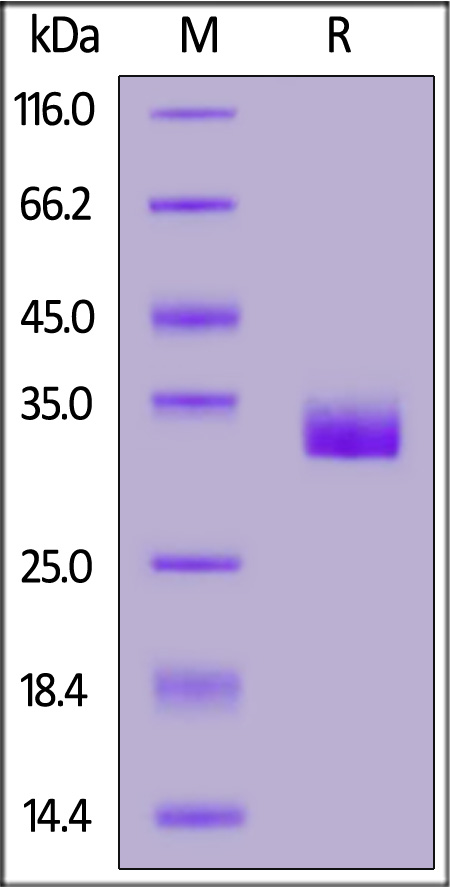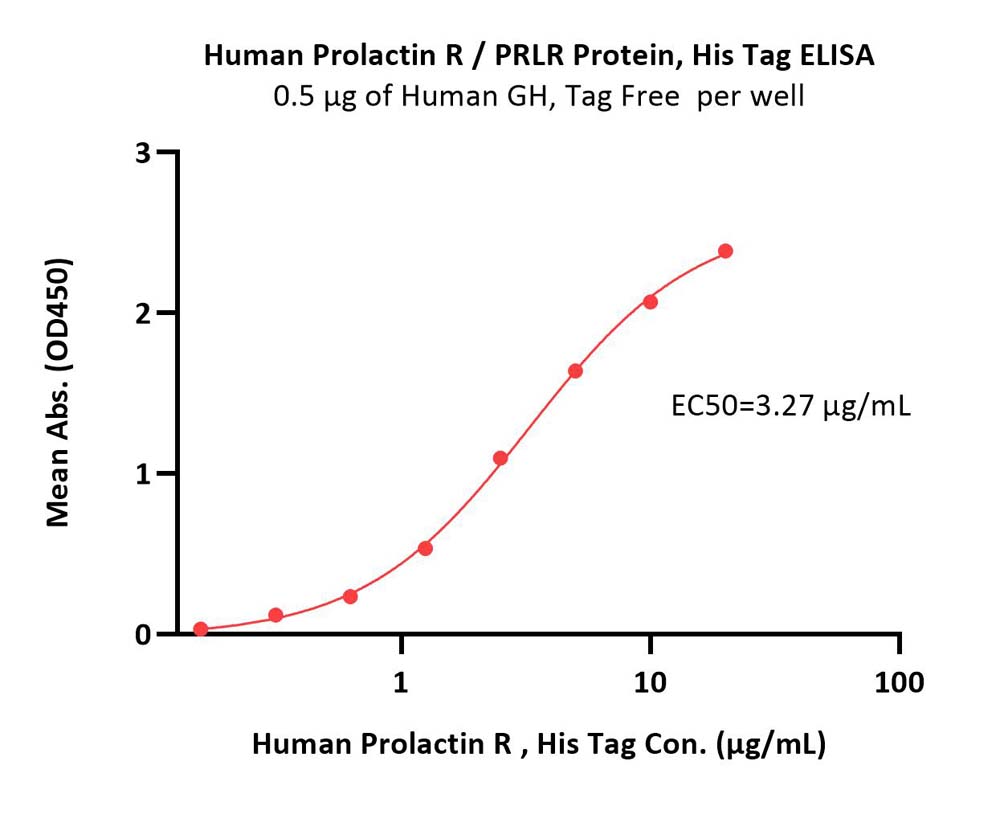分子别名(Synonym)
Prolactin R,PRLR,PRL-R
表达区间及表达系统(Source)
Human Prolactin R, His Tag (PRR-H52Ha) is expressed from human 293 cells (HEK293). It contains AA Gln 25 - Asp 234 (Accession # P16471-1).
Predicted N-terminus: Gln 25
Request for sequence
蛋白结构(Molecular Characterization)

This protein carries a polyhistidine tag at the C-terminus
The protein has a calculated MW of 26.3 kDa. The protein migrates as 32-35 kDa under reducing (R) condition (SDS-PAGE) due to glycosylation.
内毒素(Endotoxin)
Less than 1.0 EU per μg by the LAL method.
纯度(Purity)
>95% as determined by SDS-PAGE.
制剂(Formulation)
Lyophilized from 0.22 μm filtered solution in 50 mM Tris, 150 mM NaCl, pH7.5 with trehalose as protectant.
Contact us for customized product form or formulation.
重构方法(Reconstitution)
Please see Certificate of Analysis for specific instructions.
For best performance, we strongly recommend you to follow the reconstitution protocol provided in the CoA.
存储(Storage)
For long term storage, the product should be stored at lyophilized state at -20°C or lower.
Please avoid repeated freeze-thaw cycles.
This product is stable after storage at:
- -20°C to -70°C for 12 months in lyophilized state;
- -70°C for 3 months under sterile conditions after reconstitution.
电泳(SDS-PAGE)

Human Prolactin R, His Tag on SDS-PAGE under reducing (R) condition. The gel was stained with Coomassie Blue. The purity of the protein is greater than 95%.
活性(Bioactivity)-ELISA

Immobilized Human Prolactin, Mouse IgG2a Fc Tag, low endotoxin (Cat. No. PRN-H5257) at 5 μg/mL (100 μL/well) can bind Human Prolactin R, His Tag (Cat. No. PRR-H52Ha) with a linear range of 20-156 ng/mL (QC tested).
Protocol

Immobilized Human GH, Tag Free at 5 μg/mL (100 μL/well) can bind Human Prolactin R, His Tag (Cat. No. PRR-H52Ha) with a linear range of 0.313-5 μg/mL (Routinely tested).
Protocol
背景(Background)
As a transmembrane receptor, the prolactin receptor (PRL-R) interacts with prolactin. In addition, the PRL-R also binds and is activated by growth hormone (GH) and human placental lactogen (hPL). Preclinical investigations, epidemiological studies and analyses of tissue specimens from patients strongly support the contribution of prolactin receptor (PRLR) signaling to breast and prostate tumorigenesis and cancer progression. Moreover, The PRLR has been found to be essential for lobuloalveolar maturation of the mammary glands during pregnancy, as evidenced by the fact that PRLR knockout mice show severely impaired development of lobuloalveolar structures.























































 膜杰作
膜杰作 Star Staining
Star Staining











